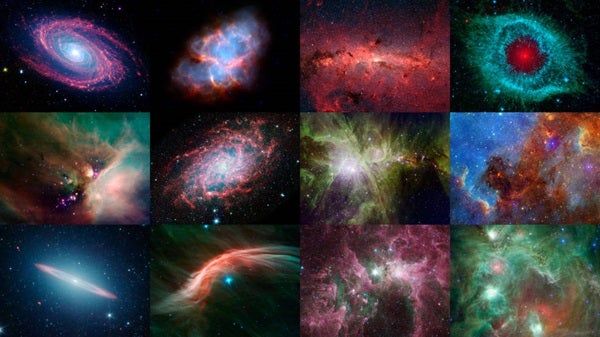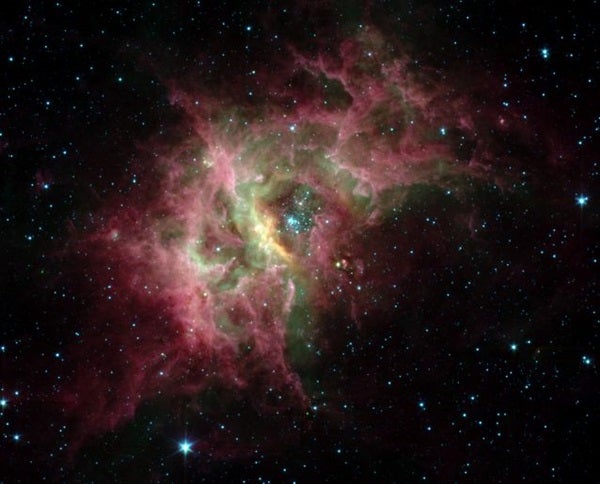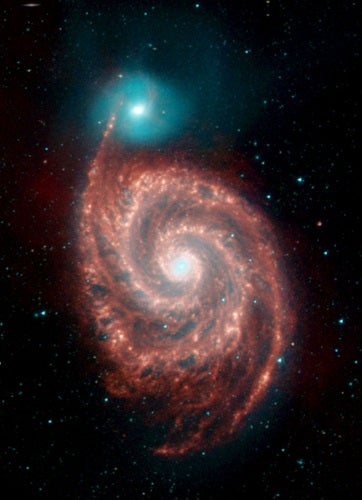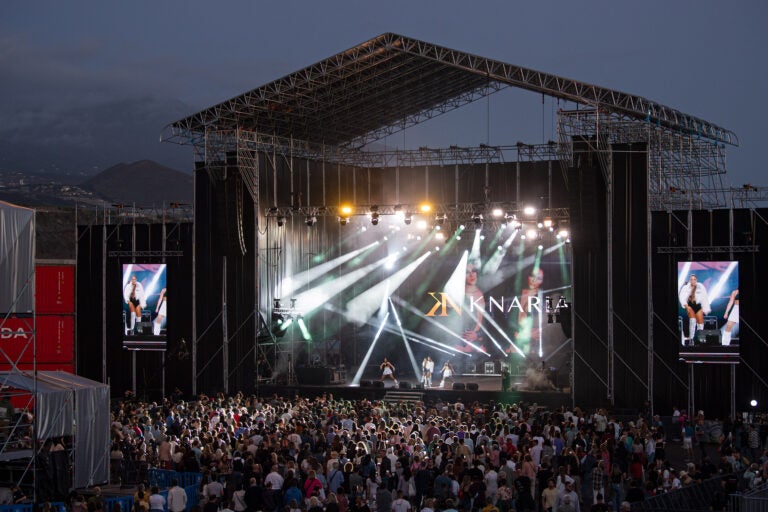The Spitzer Space Telescope has spent 16 years revealing the secrets of the infrared universe. But age has finally caught up to the beloved telescope. Now, NASA has decided to retire the telescope and will power it down on Jan. 30.
Although Spitzer was never a household name — often working in tandem with other iconic observatories like Hubble — its contributions cannot be understated. Spitzer’s ability to see through thick space dust revolutionized our view of the cosmos. This allowed astronomers to study objects that previously were too cold, too distant, or too obscured to be observed at other wavelengths.
From mapping our place in the Milky way to peeping a new ring around Saturn, Spitzer revealed hidden cosmic features within our solar system and beyond. The telescope ushered in a new era of planetary science when it became the first to directly detect light from planets outside of our solar system.
Achieving scientific feats that were above and beyond what Spitzer was designed for was a defining theme in the telescope’s career. But beyond that, Spitzer has paved the way for the future of infrared observing. The larger and more sensitive James Webb Space Telescope, launching in 2021, will pick up where Spitzer left off. It will study some of Spitzer’s breakthroughs with even greater precision.
But that doesn’t make it any easier to say goodbye to Spitzer. As the telescope’s mission comes to a close, take a look back on some of the amazing images and discoveries that it made during its illustrious career.
Infrared scavenger hunt
Thanks to Spitzer’s ability to peer through the obscuring effects of dust with its infrared vision, the telescope discovered hundreds of previously unknown objects early in its career.
First light from alien planets
Using Spitzer’s infrared eyes, astronomers directly detected the glow of giant planets orbiting stars like the Sun.
Spitzer sees a “smoke-free” Crab
The first high-resolution infrared images of the Crab Nebula highlighted a dusty puzzle.
M16 scorched by supernova
Spitzer Space Telescope revealed a cloud of hot dust at the heart of the Eagle Nebula (M16). The hot dust pointed to a stellar explosion there.
Spitzer’s stunning images of galaxies
These lovely Spitzer images not only helped astronomers learn how the universe works, but they also were pretty easy on the eyes.
TRAPPIST-1 has a solar system like no other, brought to light by the TRAPPIST and Spitzer telescopes.
Dead stars and doomed planets
Learn how the Spitzer Space Telescope ushered in a new era for white dwarf science.
NASA images the most distant galaxy ever resolved
The Hubble and Spitzer space telescopes combined forces to photograph a small, distant galaxy amplified by gravitational lensing.
Early galaxies shone brighter and hotter than expected
Spitzer illuminated the brilliant star factories that flicked on the first lights to stream freely through the universe.
Astronomers peer into a super-Earth’s atmosphere for first time
The Hubble and Spitzer space telescopes allowed astronomers to peer into the atmosphere of a super-Earth for the first time. It found the atmosphere of GJ 3470 b is surprisingly simple, made of mostly hydrogen and helium.
Who knew that a relatively modest, 33-inch-diameter telescope launched in 2003 would reveal a universe that’s far more beautiful and complex than many imagined. As the field of infrared observing continues to move forward, let’s never forget how Spitzer helped get us there.












